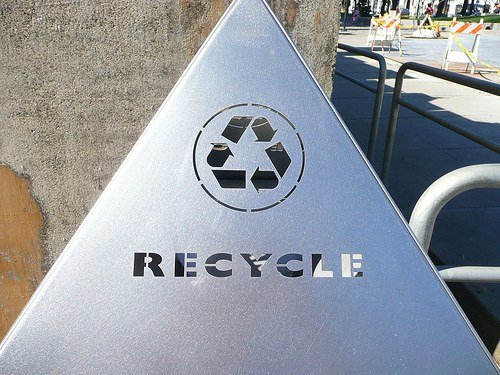Tesla’s Gigafactories, BYD’s mega-factories and CATL’s plans for expansion into Germany are but the leading edge of a global rush into lithium ion battery production that will have the world running on lithium in no time. It’s being compared to the oil rush as companies throw tens of billions of dollars into factories that will crank out battery cells by the gigawatt-hour that will power the electric vehicle fleets and stationary storage solutions of tomorrow.
But at the end of the useful life of a battery in a vehicle, what happens with it? Numeroussecond-life battery solutions are cropping up, but while repurposing a battery is preferred, sometimes it’s simply not an option. In those cases, it’s time to start talking about recycling. Just as battery production capacities are ramping up, companies are rushing into battery recycling, in search of the best technological solutions and clamoring for exclusive licenses, patents and the like, around the world.
Tesla has committed to recycling all of its own batteries in-house, but at the scale it is operating – and will soon be operating at – when its Nevada and Chinese Gigafactories are fully operational, it may need some help chewing through all of its batteries destined for recycling. American Manganese (AM) says it can retrieve 100% of the lithium, cobalt, nickel, manganese and aluminum from batteries, like those used in plug-in vehicles, using technology it originally developed to process low-grade manganese ores.
We spoke with American Manganese CEO Larry Reaugh about its roots in mining and how he believes it sets them up to lead the charge into plug-in vehicle battery recycling. Larry shared that AM cut its teeth on developing its patented approach to extracting manganese from ore. Though the process was not cost-effective for use in mining due to the low concentrations of minerals, they found it to be ideal when used to extract the valuable cathode materials from batteries, due to the higher concentration of the valuable metals.
Larry shared that when it comes to recycling the popular Nickel – Manganese – Cobalt (NMC) chemistry, “cobalt is the driving factor behind recycling of batteries.” The global supply chain of cobalt has driven prices up to astronomical levels in recent years as EV manufacturers have stacked their ever-increasing demand on top of the demand generated from the consumer electronics industry.
Recovering cobalt from the cells might be where the money is at, but the company is looking beyond cobalt and has demonstrated that its process can recover up to 100% of the cathode materials in the battery including lithium, cobalt, manganese, aluminum, nickel. Larry shared that the cathode in a typical EV battery pack is 20-30% of the total materials – or up near 60% of the materials in each battery cell. Battery pack and module housings and wiring could be assessed and repurposed as used parts versus being run through a recycling process. Metal cell casings can also be recycled after being stripped off as part of the overall recycling process.
Ultimately, the metals in plug-in vehicle batteries will continue to have value, and given the concentration in battery cells, it should have a reasonable payout compared to purchasing new raw materials which have to be sourced from around the world, mined and shipped. Recycling, on the other hand, can happen in the same place as new cells are being made, minimizing the amount of non-value add shipping that would otherwise be required for reclaimed component materials.
Larry shared that, “There is a strong business case for recycling and it’s just the right thing to do from an environmental standpoint.” The risk with the current emphasis on cobalt is the tailing off of demand as the very same cobalt pricing that makes it attractive to reclaim through recycling makes it a target for the penny-pinching battery companies looking to drive the prices of battery cells down.
Tesla has already gone after this and trimmed cobalt usage in its cars from an average of 11kgs to 4.5kgs in the current generation, with plans to take that to zero. Cobalt isn’t just expensive, it’s also toxic so definitely something for companies to actively move away from for a number of reasons.
American Manganese isn’t currently producing any resulting powders from its recycling process at any scale but has done so on a trial basis. It is currently building a pilot plant that will focus on lithium ion chemistries. Larry shared that the company is focused on higher volume, standardized Li-Ion chemistries, noting that, “We’re not looking at lithium phosphate or lithium iron chemistries at this point.”
“We have been contacted by several large battery manufacturers and EV companies and some manufacturers that make cell phones and everything else,” Larry related. Most of the interest at present comes from China, Japan and Korea, at the heart of the consumer electronics battery manufacturing industry and increasingly, the plug-in vehicle battery industry.
Larry is exploring licensing its proprietary technology out or building and operating plants adjacent to customer facilities. Ultimately, the decision will be driven based on the economics and customer preference. “We think that this is going to be commercialized and that it’s going to be a huge market.”
Source: Cleantecnica



